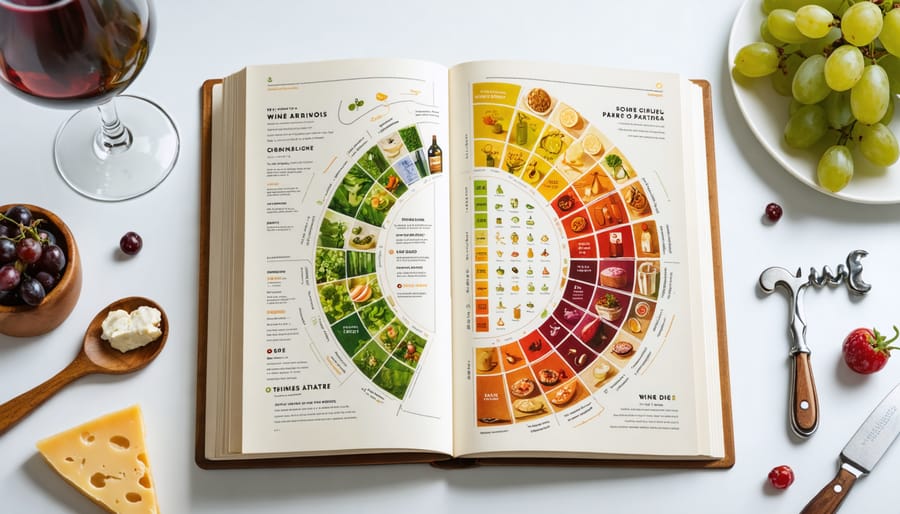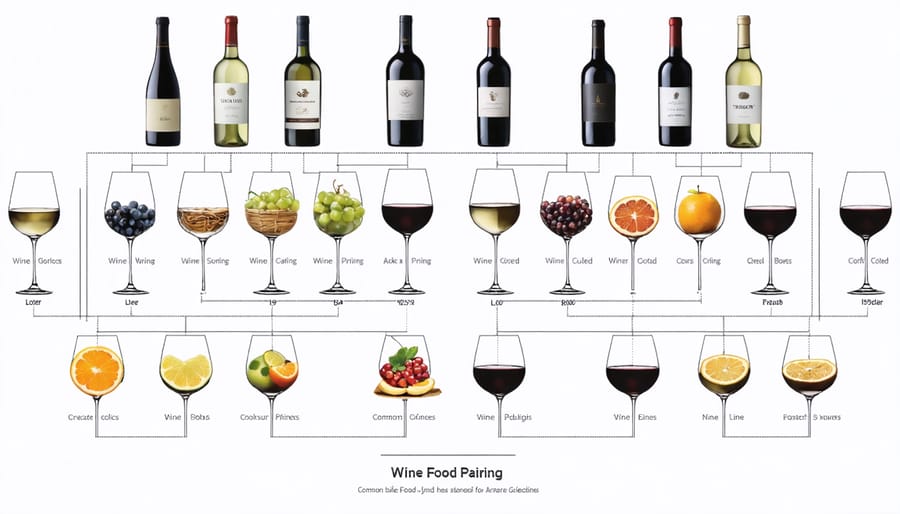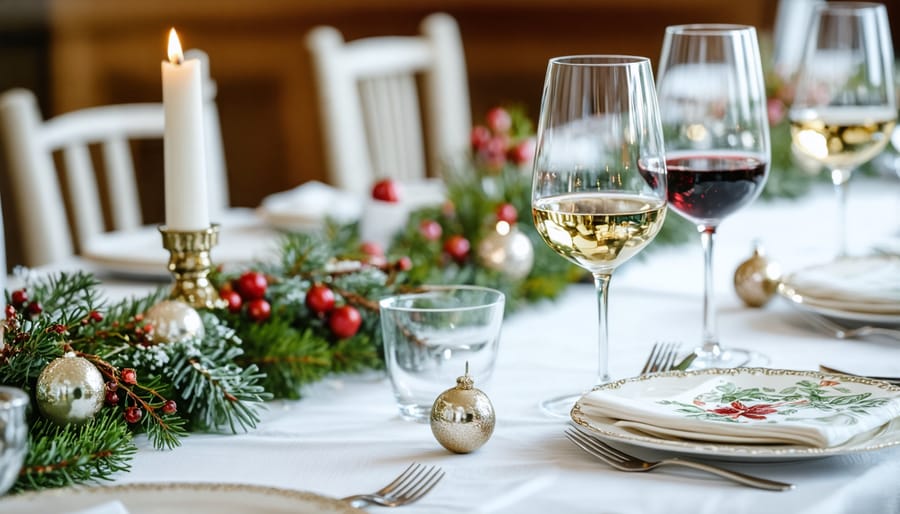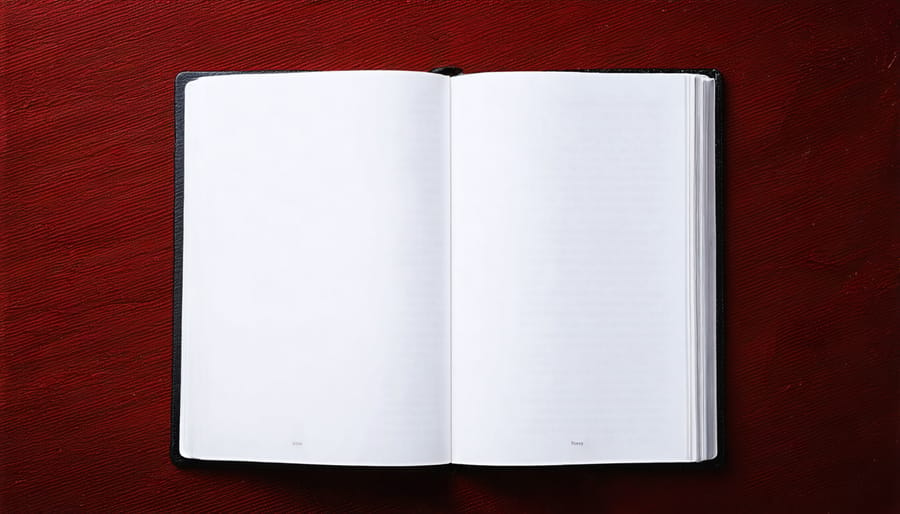
Transform your dinner parties from good to unforgettable with the right wine and food pairing guide by your side. Whether you’re hosting an intimate gathering or simply elevating your weeknight meals, mastering the art of wine pairing doesn’t require a sommelier certification – just the right book in your kitchen arsenal.
Picture this: you’ve prepared a beautiful Mediterranean feast, and with one quick reference, you know exactly which wine will make those flavors sing. That’s the power of a well-crafted wine and food pairing book. Today’s modern guides go beyond the old “red with meat, white with fish” rules, offering practical, approachable advice for real-world entertaining.
As someone who’s gone from anxiously second-guessing every wine choice to confidently creating memorable food and wine experiences, I’ve discovered that the right pairing guide can become your most trusted kitchen companion. The best books decode complex wine terminology into everyday language, feature visual guides you can reference at a glance, and provide practical tips that work for both Tuesday night dinners and special occasions.
Let’s explore how to choose the perfect wine pairing book that matches your lifestyle, cooking style, and entertainment goals – because the right guide doesn’t just teach you about wine; it helps you create moments worth savoring.
Getting Started with Wine and Food Pairing
Understanding Your Palate
Like learning a new language, understanding your wine palate takes time and practice. The good news? You can develop wine tasting skills right in the comfort of your home. Start by focusing on one element at a time – perhaps the sweetness of a Riesling or the tannins in a bold Cabernet.
I remember when I first started exploring wines, everything tasted simply “red” or “white.” But by taking small sips and paying attention to how the wine feels on different parts of your tongue, you’ll begin noticing subtle flavors like cherry, vanilla, or even leather! Keep a small notebook handy to jot down your impressions – there’s no wrong answer when it comes to what you taste.
Try this fun exercise: Take three different wines and taste them side by side. Notice how they compare in terms of acidity, body, and finish. Are they light and crisp, or rich and velvety? Does the flavor linger or disappear quickly? These observations will help you build a personal flavor vocabulary that makes wine pairing feel more intuitive and less intimidating.
Essential Wine Terms Made Simple
Ever felt intimidated by wine terminology? Let’s break down those fancy wine words into everyday language you can actually use! Think of “tannins” as that dry, slightly bitter sensation you get from strong black tea – that’s exactly what they feel like in red wine. When someone mentions “body,” they’re simply talking about how heavy or light the wine feels in your mouth, like the difference between whole milk and skim milk.
“Dry” doesn’t mean the wine will leave you thirsty – it just means it’s not sweet. And that lovely “bouquet” everyone talks about? It’s simply the wine’s aroma when you give it a good sniff. When wine lovers mention “notes,” they’re describing the different flavors they taste, like hints of cherry or vanilla.
“Acidity” is that refreshing, zesty quality that makes your mouth water, similar to when you bite into a fresh lemon. And “finish” is just wine-speak for the taste that lingers after you sip – kind of like the aftermath of a piece of dark chocolate.
See? Wine terms aren’t so scary after all!
What Makes This Book Different
Visual Pairing Charts
Let’s talk about my favorite part of this book – the visual pairing charts that make matching wine and food almost as easy as putting together a puzzle! These eye-catching diagrams are absolute game-changers, especially when you’re in a hurry to decide what to serve at your next dinner party.
The charts use a clever color-coding system that instantly shows you which wines complement different foods. Picture a beautiful wheel where red wines naturally align with bold, hearty dishes, while whites connect to lighter fare. What I particularly love is how the charts incorporate both traditional and modern pairings – so whether you’re serving classic beef bourguignon or trendy Korean BBQ, you’ll find the perfect match.
My friend Sarah, who’s always been intimidated by wine pairing, tells me these charts have become her secret weapon. She keeps a photo of them on her phone for quick reference while grocery shopping! The charts also include helpful icons indicating intensity levels and flavor profiles, making it super intuitive even if you’re just starting your wine journey.
The visual guides don’t just stop at main courses – they extend to appetizers, desserts, and even challenging-to-pair ingredients like artichokes and asparagus. They’re beautifully designed too, making them as lovely to look at as they are practical to use. Trust me, these charts will quickly become the most-referenced pages in your book!

Real-Life Applications
A wine and food pairing book becomes your trusted companion for both everyday meals and special occasions. When you’re planning a casual weeknight dinner of pasta, simply flip to the Italian section for the perfect wine suggestion that’ll elevate your basic spaghetti into a restaurant-worthy experience. The book’s seasonal recommendations are particularly helpful during holidays, guiding you to choose wines that complement traditional dishes like roast turkey or Easter ham.
For impromptu gatherings, the quick-reference charts save precious time. Whether friends drop by with takeout or you’re putting together a last-minute cheese board, you’ll find instant suggestions that make you look like a seasoned host. The book’s portable size means you can even take it grocery shopping, making wine selection less overwhelming when planning meals for the week.
Special occasions become more memorable with thoughtful wine pairings. From intimate anniversary dinners to milestone birthday celebrations, the book’s special occasion chapter provides foolproof combinations that impress guests without requiring sommelier-level knowledge. Many readers find themselves discovering new favorite combinations they wouldn’t have considered, like pairing a crisp Riesling with spicy Asian cuisine or enjoying a bold Zinfandel with chocolate desserts.
The book’s practical approach means you’re not just learning abstract concepts – you’re developing skills that enhance every meal, whether it’s a quiet dinner for two or a festive gathering with loved ones.
Perfect Pairings at Home
Weeknight Dinner Solutions
Let’s make weeknight dinners less stressful and more enjoyable with these quick wine pairing solutions! For that comforting pasta night, reach for a medium-bodied Chianti or Sangiovese – they’re perfect partners for everything from simple spaghetti to rich lasagna. When you’re grilling chicken, a crisp Chardonnay or refreshing Pinot Grigio will complement those smoky flavors beautifully.
For those nights when you’re craving Asian takeout, keep a bottle of off-dry Riesling handy – it works wonders with spicy stir-fries and Thai curries. Making fish tacos? A zesty Sauvignon Blanc brings out the citrusy notes and cuts through creamy slaws perfectly. And for that weekly taco Tuesday tradition, try a fruit-forward Spanish Garnacha that can handle all those bold Mexican spices.
I’ve found that keeping a few versatile wines on hand makes weeknight pairing so much easier. My go-to selection includes a light red (like Pinot Noir), a crisp white (Sauvignon Blanc), and a medium-bodied red (Merlot) – these three will cover most of your everyday dining needs. Remember, weeknight wines don’t need to be expensive or complicated; they just need to complement your meal and bring a little extra joy to your table.
The best part? Once you master these basic pairings, you’ll feel more confident experimenting with new combinations that suit your personal taste.

Entertaining with Confidence
Let’s turn those dinner party jitters into confidence! Hosting dinner parties becomes a breeze when you’ve got the right resources at your fingertips. I remember my first wine-pairing dinner – I was so nervous about getting it wrong! But here’s the secret: preparation is your best friend.
Start by creating a welcoming atmosphere with soft lighting and background music. Set your table ahead of time, leaving space for wine glasses and water goblets. Pro tip: keep a copy of your pairing book handy in the kitchen for quick reference!
When planning your menu, stick to dishes you’re comfortable preparing. This allows you to focus on creating those perfectly paired wines experiences for your guests. Consider starting with a light aperitif while guests arrive, then progress through your courses naturally.
Don’t feel pressured to be a sommelier overnight! Share what you’ve learned with your guests – they’ll love being part of the experience. Keep note cards with basic wine descriptions and pairing notes near each bottle, encouraging conversation and creating an interactive element to your gathering.
Remember, the best dinner parties aren’t about perfection – they’re about creating memorable moments with friends. When you’re relaxed and enjoying yourself, your guests will too!
Seasonal Pairing Suggestions
As someone who loves entertaining throughout the year, I’ve found that adapting wine choices to match seasonal ingredients and occasions truly elevates any dining experience. Spring calls for crisp, light wines that complement fresh garden vegetables and tender herbs – think Sauvignon Blanc with asparagus dishes or rosé with spring peas and mint.
Summer entertaining becomes a breeze when you know to pair refreshing wines with seasonal favorites. A chilled Vermentino perfectly matches grilled seafood on warm evenings, while a light-bodied Beaujolais complements those weekend barbecues without overwhelming the palate.
When autumn arrives, we naturally gravitate toward richer flavors. This is when medium-bodied reds like Pinot Noir shine alongside harvest vegetables and mushroom dishes. For Thanksgiving dinner, a versatile Grenache can harmoniously accompany everything from turkey to cranberry sauce.
Winter’s hearty fare calls for equally robust wines. A warming Cabernet Sauvignon pairs beautifully with braised meats and root vegetables, while a full-bodied Chardonnay complements creamy winter soups and pasta dishes. For holiday celebrations, sparkling wines remain timeless choices that work wonderfully with both appetizers and desserts.
Remember that seasonal pairing isn’t just about matching flavors – it’s about creating memorable experiences that feel natural and appropriate for the moment. The best combinations often arise from considering both the season’s produce and the occasion’s mood.
Making the Most of Your Investment
Creating Your Wine Journal
Creating a wine journal is like keeping a delightful diary of your tasting adventures, and it’s easier than you might think! Start with a simple notebook or digital app – whatever feels most natural to you. For each wine you try, jot down the basics: the name, vintage, and producer. But don’t stop there! Note your initial impressions – was it love at first sip, or did it grow on you?
I remember when I first started my wine journal, I used to draw little hearts next to the wines that made me smile. Now, I include photos of the bottles and the dishes I paired them with. It’s become such a wonderful memory book of dinner parties and quiet evenings alike.
Make sure to record the foods you enjoyed with each wine and how well they worked together. Was that Pinot Noir amazing with your mushroom risotto? Write it down! Include details about the wine’s characteristics – its body, flavors, and aromas – using whatever words feel right to you. There’s no need for fancy wine terminology; “tastes like summer berries” is perfectly fine!
Keep your journal handy during tastings and dinner parties. You’ll be amazed at how quickly you’ll develop a personal reference guide that reflects your unique taste preferences and favorite pairings.

Building a Versatile Wine Collection
Building a versatile wine collection starts with selecting wines that pair well with a variety of dishes. I remember feeling overwhelmed when I first started my collection, but I’ve learned that you don’t need hundreds of bottles to create wonderful dining experiences.
Start with the basics: a crisp Sauvignon Blanc, a medium-bodied Pinot Noir, and a versatile Prosecco. These three wines will cover many of your everyday pairing needs. Add a full-bodied Cabernet Sauvignon for red meat dishes and a buttery Chardonnay for creamy pasta and seafood.
Consider stocking wines at different price points – keep everyday wines for casual dinners and special bottles for celebrations. I always suggest having at least one bottle of each major wine style: sparkling, light white, full white, light red, and full red. This gives you flexibility when unexpected guests arrive or when you’re experimenting with new recipes.
Don’t feel pressured to build your collection overnight. Take time to discover what you enjoy and gradually add bottles that bring you joy and complement your favorite foods.
As we wrap up our journey through this invaluable wine pairing resource, it’s clear that this book is more than just another addition to your cookbook shelf – it’s your personal sommelier, ready to guide you through countless memorable meals and gatherings. I remember how intimidating wine pairing felt before discovering guides like this one, but now it’s become one of the most enjoyable parts of planning dinner parties!
Whether you’re hosting a casual weekend brunch or planning a special anniversary dinner, having this book at your fingertips means you’ll never second-guess your wine choices again. The straightforward approach, practical tips, and easy-to-follow recommendations make it an indispensable companion for both novice wine enthusiasts and seasoned home entertainers.
What I love most about this guide is how it transforms wine pairing from a mysterious art into an accessible, enjoyable adventure. You’ll find yourself experimenting with new combinations, discovering unexpected favorites, and sharing your newfound knowledge with friends and family. The confidence you’ll gain in selecting the perfect wine for any dish is truly priceless.
So why wait? Take the first step in elevating your dining experiences. Let this book be your companion in creating those perfect moments where food and wine dance together in perfect harmony. Trust me – your taste buds (and dinner guests) will thank you!



